Rating: 




In a nutshell: Haleakala Crater is the most popular attraction in Upcountry Maui. Stunning sunrises, panoramic out-of-this-world landscapes, birds-eye views of the Maui central valley, and flora and fauna that exist nowhere else in the world.
Minuses: The air is thin, and hiking here is not for the less fit.
Sound-bite: “Oh my Lord, it is cold up here!”
DETAILS:
Haleakala National Park covers the summit area of the larger of the two volcanic mountains that make up Maui. The National Park’s boundary has fingers that extend down the Hana side of the mountain, all the way to the ocean. (The entire park includes the Kipahulu area, where Ohe’o Gulch (Seven Pools) and Pipiwai Trail are found – this article includes only the Summit Area.)
The Legend of Maui
Haleakala literally means “House of the Sun.”
According to Hawaiian legend, the goddess Hina complained to her son Maui that the sun moved across the sky too fast for her tapa cloth to dry. The next morning before sunrise, Maui went to the top of Haleakala and waited in hiding. When the Sun awoke, Maui lassoed him, and beat him into submission. Maui then made the Sun an offer he couldn’t refuse: he would let the Sun go, but in return the Sun would have to cross the sky much more slowly from that day forward.
The Sun agreed, Maui released him, and we’re now blessed with long sunny days!
Read in Host Culture
Geologically Speaking
Speaking of “crater” this is a good time to explain that the summit area is actually not a typical crater formed by volcanic activity (such as you would see on the Big Island of Hawai’i.) Haleakala Crater is so gigantic because it was formed over eons as the result of erosion of the entire volcanic mountain top. Over this period of time, smaller lava flows back-filled the eroding valley, building up the floor of what is commonly called the Haleakala Crater. The cinder cones that dot the landscape here are the last of these most recent eruptions (and these individually have true volcanic craters.)
Like the oft misunderstood prune, there has been an effort to re-brand the Haleakala Crater area something more technically accurate (dried lava-mountain?), but I think the Maui Guidebook will just call it a capital-C “Crater” (as in place name) rather than the longer-winded (and far-less recognized) “Haleakala National Park Summit Area.”
Oh, and that dried lava-mountain you’re looking at isn’t actually done erupting yet. Haleakala is dormant, and (geologically speaking) it has erupted fairly recently. You’ll hear most guidebooks quote the more “hey that’s not that long ago” date of 1790, but that date is largely based upon deductions made from a notoriously bad map maker’s map not matching the coastal lines on an accurate map. When subjected to carbon dating, the rocks from that lava flow date to the 1600’s. (I don’t know about you, but my money is on the carbon.) Haleakala is also expected to erupt several more times in the future. Since geological time is measured in the millions of years, our time on Haleakala (and Earth) is short enough that you can feel secure leaving the heat-reflective lava suit back home in the family fallout shelter.
Stuff to Remember When You Visit
Remember to bring your sunscreen, plenty of water, and something else you may have left back home: layers of warm clothing. Overnight (yeah, before sunrise) temperatures can dip below freezing. Even during the day temperatures can be cold enough for a sweatshirt, or even a jacket – especially if you’re not getting any blood moving waiting for the yellow disc to rise above the horizon. Once the sun does rise, there is less atmosphere to scatter and absorb UV rays, so the sun’s skin-burning potential is actually stronger at these higher elevations than it is at the beach.
Oh, and while we’re on the subject of the beach and ocean – if you’re a diver, the reduced pressure at the altitude of Haleakala is well below that of a pressurized aircraft. So be sure to observe degassing time rules.
Also important to remember, if you go for a hike into the Crater, the hike in is deceptively easy. The hike out is another story. The thin air and elements (sun, wind, occasionally rain) means you’ll likely take twice as much time (and way more than twice the effort) to get out than you spent hiking in.
Sunrises
Sunrise is the most popular time here. Mark Twain called it “the sublimest spectacle I ever witnessed.” Words can not do this event justice, it is a feeling to be experienced. Conditions are typically conducive to spectacular sunrises – but that doesn’t mean they’re guaranteed. Arriving here for sunrise means getting up very early. I usually suggest to friends visiting to go on their first or second morning (while their body is still on an earlier time-zone.)
Sunrise Scheduling 101
1. A prior reservation is required to be admitted to the park for sunrise.
2. You want to get to the summit 20-30 minutes before the sunrise time in the table below.
3. Leave yourself an extra 15-30 minutes (depending on how far you’re driving) for slow-pokes and paying the entrance fee.
4. If you’re driving during peak traffic times (typically during daylight hours, and especially from West Maui) drive times can take longer.
Sunrise/Sunset:
|
Drive Times:
|
(Sunrise/Sunset times are from the NPS and have been properly time adjusted for the summit.)
When the Sun Sets
A strong “second-best” next to the sunrises, sunsets are still absolutely spectacular up here. If you just find that you just can’t rationalize waking up before the crack of dawn on your vacation, hanging out for the sunset might just suffice.
Barring special closures, the park is open 24-hours a day, so you can come up here and leave any time you want.
Since there is less atmosphere up here, combined with being above turbulent atmospheric conditions, and virtually zero light pollution, the summit area of Haleakala also ranks among the very best sites in the world for viewing the night sky. Astronomers can expect to see objects up to 7th magnitude. If you don’t know what that means, magnitude is a measurement of brightness. The higher the number, the dimmer the object. Remember the bag of tools the space station astronaut accidentally let go of a few years ago? That bag of tools shines in the night sky at 7th magnitude. It is so dark up here that if you know where to look, you can literally see a backpack sized bag of tools from Haleakala lit up by the sun as it orbits Earth 174 miles above!
Flora & Fauna
Haleakala National Park has more endangered species than any other National Park in the country (including species which are not native.) The park is chock-full of facts about all the plants and creatures unique to Haleakala. If you like learning about wildlife, take the time to stop in the visitor’s center, and also to read the many educational and informational signs that the NPS has posted around the parking areas and trailheads. (You may also want to stop in the visitor’s center even if you’re just here for the views – they have one of the top drive-up Crater views.)
One of the plants which is native to only Haleakala is the Ahinahina, or Haleakala Silversword. Living only at the summit of Haleakala, the Silversword has developed some interesting adaptations for survival. One of the lesser-known adaptations is that the leaves of the Silversword form at an angle so that the older leaves focus the warming energy of the sun on to the youngest leaves. Threatened by near extinction in the 20th century, the Silversword is now considered a triumph of conservation efforts. This plant lives between 15 and 50 years, blooming only once before dying. When a Silversword goes into bloom, it puts out an impressive stalk of flowers that can be as tall as a person. The stalk contains hundreds of what look like tiny purple, wine red, or sometimes yellow sunflowers radiating in all directions. If you are hiking here in the summer, you will likely see several Silverswords in full bloom.
The nēnē is another Haleakala conservation success, although these creatures are still precariously endangered. Years of hunting by introduced species (and people), the nēnē became virtually extinct. With only 30 individuals remaining, in the 1960’s & 70’s a captive breeding program In England bred and then reintroduced the birds to Haleakala Park. Today a stable population of about 250 wild individuals populates the park, and now nēnē are sighted well outside the park.
Many guidebooks mistakenly call the summit of Haleakala the nene’s native habitat. However, the summit area is not where these birds were once primarily found, but was chosen as a protective area to reestablish the species. A relative of the Canadian Goose, the zebra-striped birds were actually once common at much lower elevations. Since the nene evolved with no natural predators, they also lay their eggs right on the ground which makes them easy-pickens for rats, mongoose, cats and dogs.
House of the Sun (and beyond!)
Jack London wrote a spectacular account of his visit to Haleakala in 1907, as he ascends through the leeward side of Haleakala to the summit, through the crater and back down to Kaupo. The story continues tracing back along the East Maui ditch system back to civilization. Surprisingly, much of it is as accurate today as it was then.
Read more
Weather
The Park Service used to offer dial-up forecasts, the phone numbers for which are still widely printed as fact in many guidebooks. Don’t bother calling these numbers, they are no more.
The NOAA offers forecasts – but keep in mind weather can change rapidly in this environment. The NOAA website will give you as accurate a forecast as you are gonna get.
Downhill Bike Tours
The Haleakala Summit is also a popular place for launching downhill bike tours. Until 2007, tour companies brought visitors to the summit for sunrise, and then launched their multi-hour downhill tour right from the parking lots. However, a string of accidents, including a fatality, caused the National Park Service to ban commercial launching of bikes within the park boundaries. You can still rent bikes from these companies and launch yourself – however this is (ironically) more dangerous than being part of a group as you don’t have a protective buffer of a tour van blocking (all but the most) aggressive drivers from passing in unsafe areas. Alternatively, the tour operators do launch from just outside the boundary of the park, but this cuts out a significant portion of the ride. Speaking as someone who once lived on Crater Road and observed many sketchy situations where lives were endangered, I would advise strongly that anyone interested in this activity a) Have been on a bike more than a couple times in the past decade, and b) become educated as to the risks, and how to minimize them.
Camping & Cabins
For hikers there are three cabins and two campgrounds inside the Crater. None have electricity or potable water. All are miles from your car, and can be strenuous hikes. For non-hikers, there is also a drive-up campground outside the Crater at Hosmer’s Grove.
You may have read elsewhere that you “literally must win a lottery to rent the cabins.” This is a bit of sensationalized exaggeration combined with outdated information. Cabin reservations, and current booking schedule, are now handled online at here – this is great news for the chronically unlucky: the only luck involved is that no one has beat you to your dates. Operated by the NPS, each cabin can accommodate up to 12 hikers and rent is a steal at $75 per night.
Waikamoi Preserve
Just inside park entrance alongside Hosmer Grove is the Waikamoi Preserve. This place is spectacular. I intend to do a full-page writeup in the future. The Nature Conservancy manages this fenced-off protected habitat of native cloud forest, and it is off-limits except to those on special hikes led by naturalists. Call 808-572-4459 to find out how you can join a group to glimpse of pre-Western-contact Hawai’i that very few will ever see.
More Info at the Park
There are programs ranging from 15-minute talks to half-day naturalist guided hikes offered most days of the week. You can just stop in the Visitor Center or call – the park phone number is 808-572-4400.
The National Park Service has some informative summaries of the park on their website. Lots of great info is also available in the Visitor’s Center, from both highly knowledgeable park staff, displays, and informational literature.
View an NPS map of Haleakala National Park on the NPS site.
Download a PDF trail map from the NPS.
Key Info:
Location:
GPS Coordinates: 20.712245,-156.249962
Facilities: National Park Rangers, Visitor’s Center, Camping (both tent and cabin), grills (Hosmer), picnic tables (Hosmer) and toilets. (No potable water.)
Phone: 808-572-4400
Fees: $30 per vehicle – NPS Info: https://www.nps.gov/hale/planyourvisit/summit-area.htm
Get directions
View Haleakala National Park (Summit) in a larger map
 MauiGuidebook.com
MauiGuidebook.com 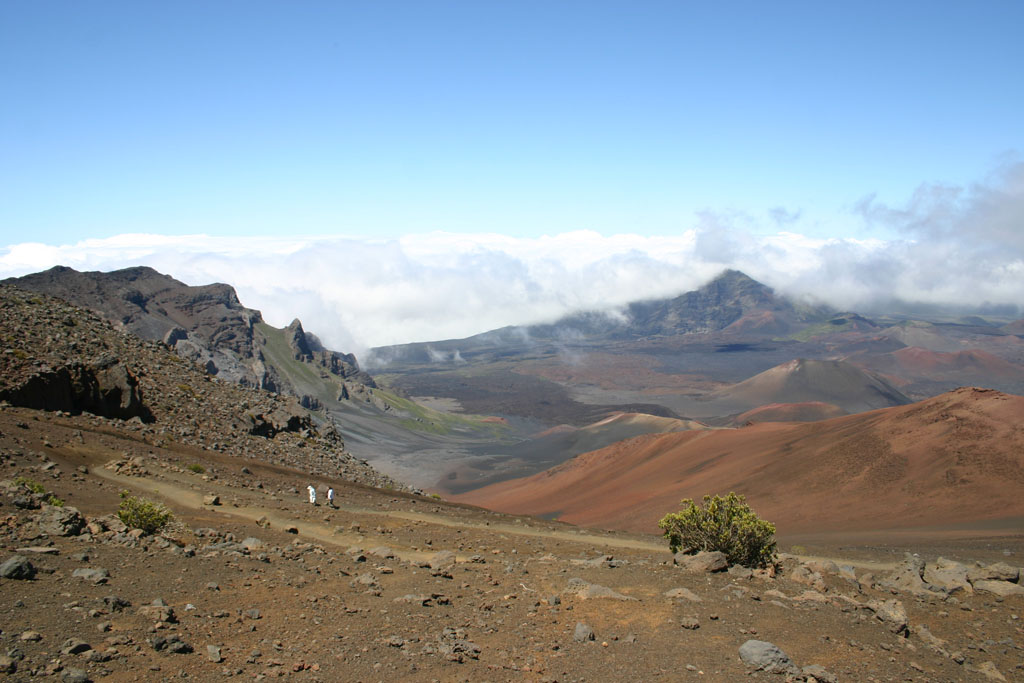
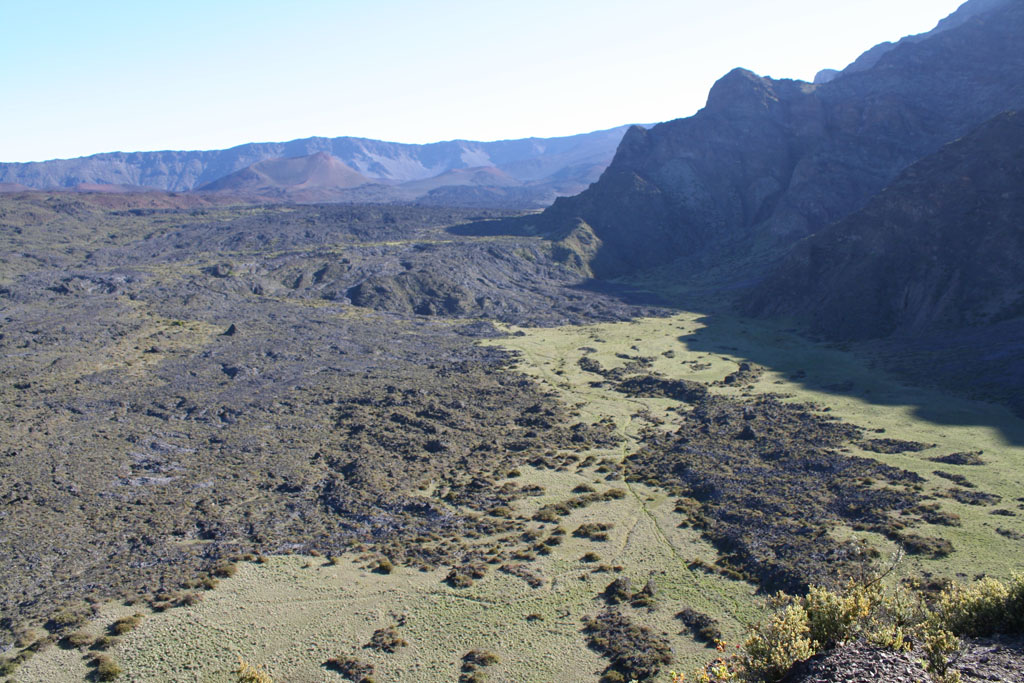


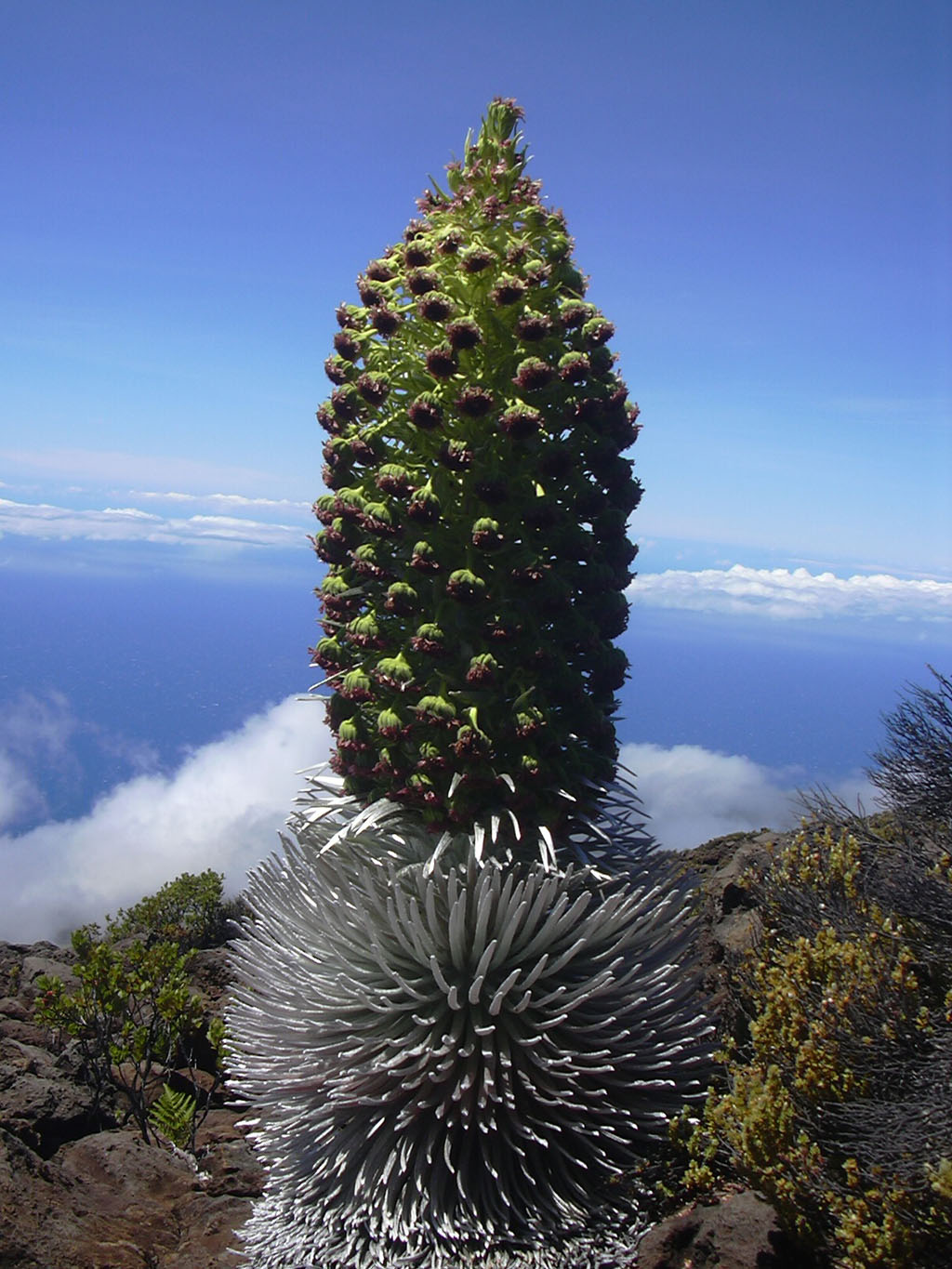
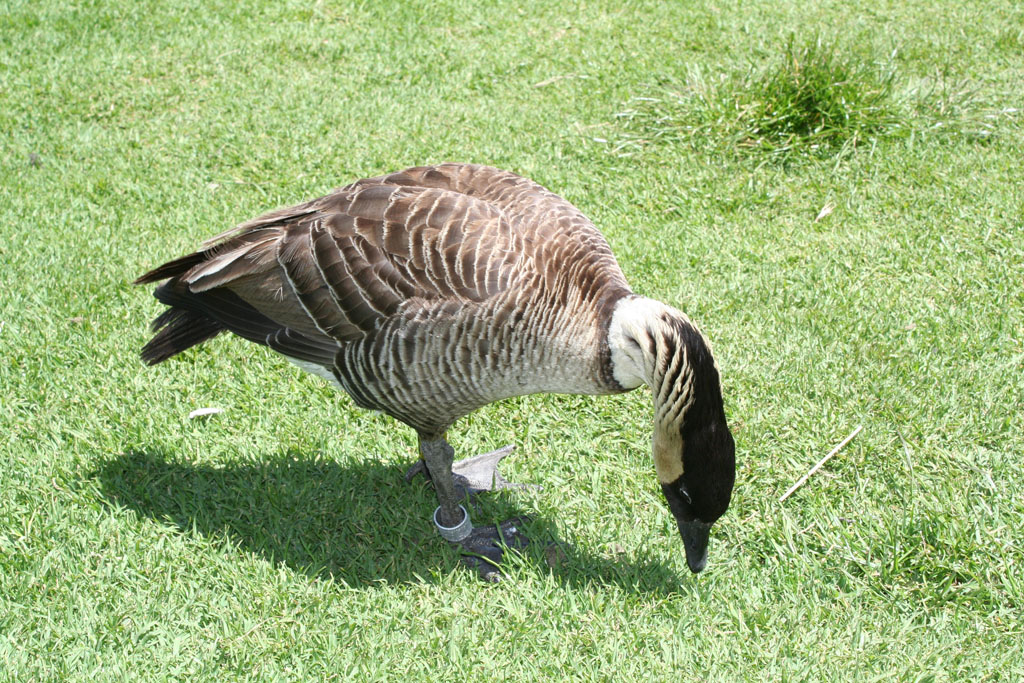
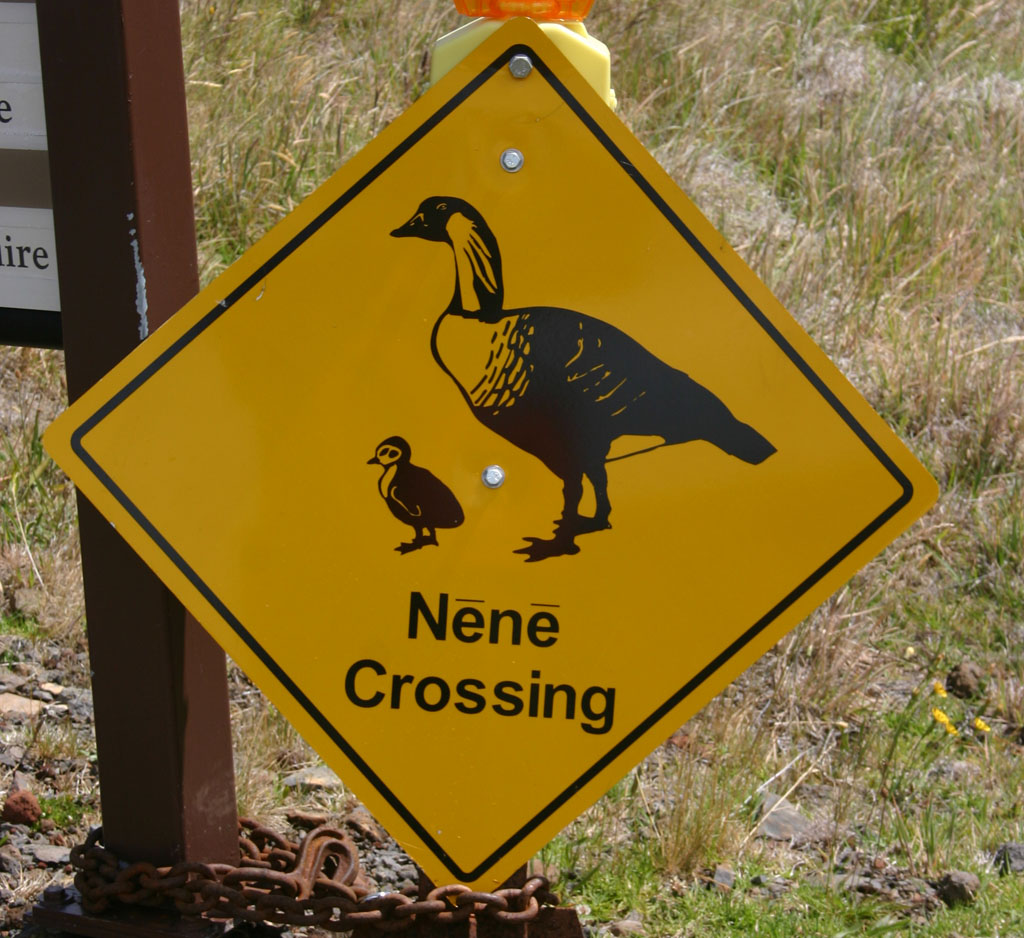
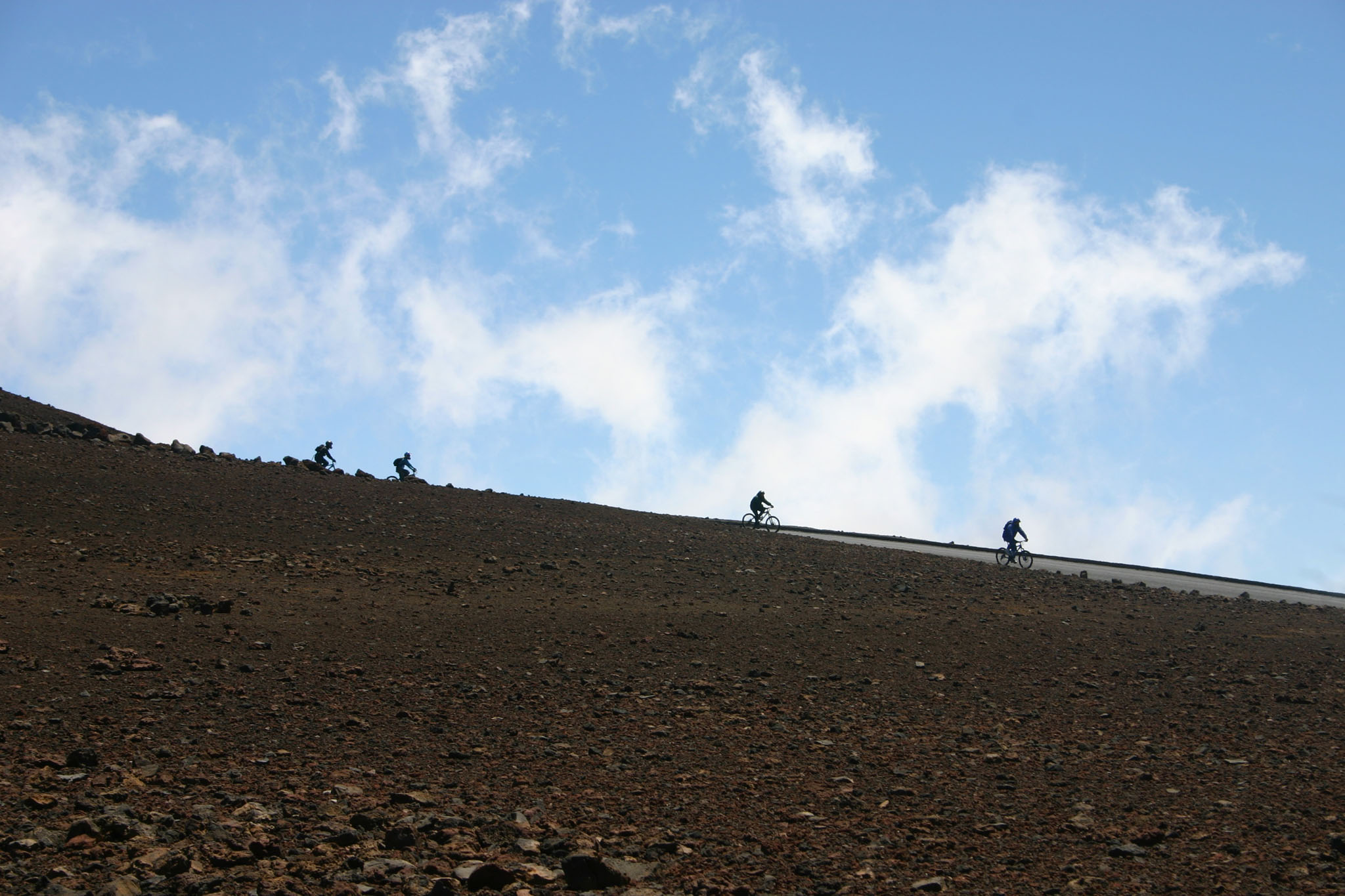
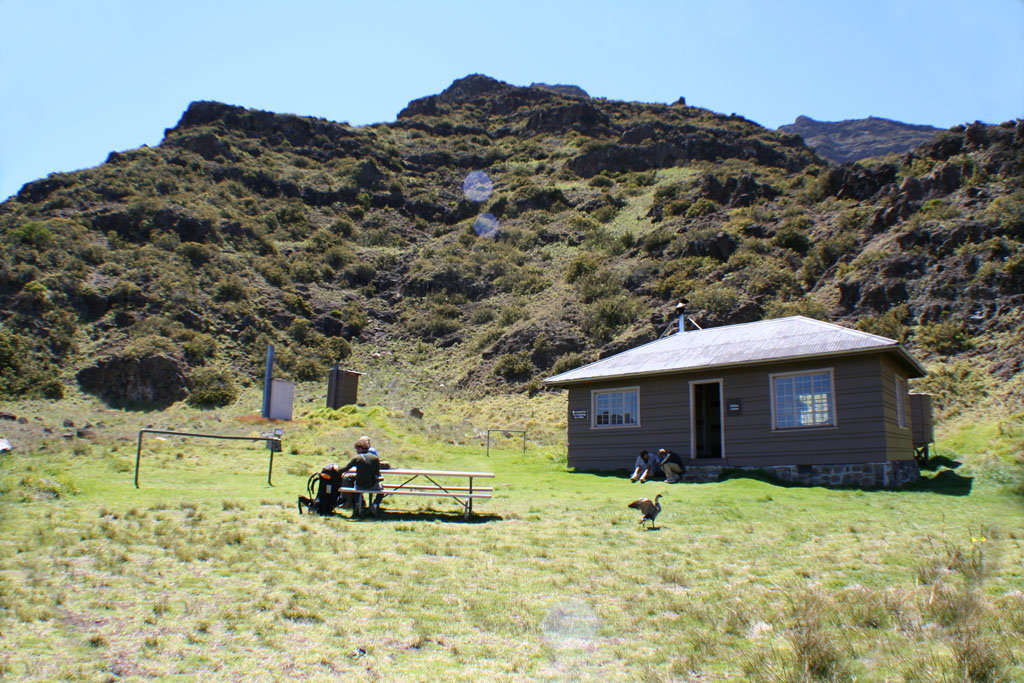
Megan Clifton says:
How much time would you allow in hiking to the cabin? Friend made a reservation for the 12 person cabin this weekend but we’re on different flights. After getting our pass at visitors center, do you think if we set off by 2 pm we could make it by sunset?
Rina says:
Are there guided camping trips in the Haleakala Crater?
Deb says:
Are there guided bus tours to the summit? Thank you
Daniel says:
Yes, there are many. Only 4 companies will be offering them starting in 2018, including Valley Isle Excursions
Rina says:
What are the four companies?
Rocky says:
Question : Once at the top of park , can you park and sleep in your car overnight?
Joshua says:
This is the most stunning place I have ever been before. This is God’s Creation, If anyone have a doubt on God, please visit this place… The wonderful Sunset and when the sun goes down. The magnificent moon comes up with billions of stars, it is an amazing spectacle… if you want to have a perfect bed to lie on look up the ceiling this is the place to be and you will be with heavenly bodies…
Shlomo Sanders says:
Is 5 hours enough for round trip to the Haleakala crater from Haleakala? I won’t be able to leave Haleakala till about 12:00 and must be back there by 5PM. If I have an additional hour then what? I understand that no serious hiking can be done in that time but better to see by car than not at all.
Mark says:
From where?
Cathy says:
Pony Express Tours has closed down, they retired 🙁
Walker says:
Good points Deanne – you must make a reservation well in advance to get into the cabins. If you don’t you’ll need to be experienced and come prepared to camp in harsh wilderness.
It should be noted these are single room cabins, bunk beds are in the one room, so sharing is really going to be an close affair!
The NPS rents cabins to one group at a time, no matter how small the party. If these young women were in over their heads in the wilderness, I would hope someone would come to their aid.
deanne hill says:
My daughter, Kendra Brandstein & her friend, Julie Chan recently camped out in the crater on December 27. We had tried to get them into a cabin months before but no one cancelled. However, when they were there they met three people who were staying in one of the cabins with 12 beds? They were the only people in the cabin. They were very nice but did not invite them to share the cabin. This seems quite unfair. So my daughter and her friend were denied staying in a cabin. Can you please explain why two young women were denied access to a cabin in 40 degree weather?
Katherine Phillips says:
You have to book the cabin way in advance. Even if it sleeps 12 and not all rooms are being used. it’s on a first come first served basis.
lilly says:
As someone that has booked and payed for the cabin in advance, I planned on having the time with my friends and family only. No strangers. Maybe the girls should have been a little more prepared to hike i.e. brought a tent if they didn’t have a cabin to stay in. Also would yo be asking this question if it would have been to you men???????
JR says:
They were denied access because they didn’t book early enough. They weren’t asked to stay with the ladies because basic safety precautions tell us not to invite strangers into such situations. I certainly hope my daughters would have done the same.